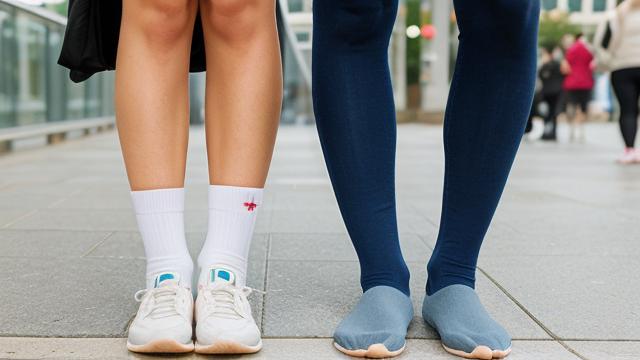A Study on the Sociological Ramifications of Translating the Collective Unconscious into an Algorithm for Predicting the Optimal Sock-to-Body Mass Ratio in Public Spaces
Fri, 26 Sep 2025 12:50:38 GMT

The Humble Sock: A Study in Sociological Proportions
In an era where data-driven decision making has become the norm, one might ask oneself: What's the most pressing issue facing society today? The answer, dear reader, lies not in the realm of politics or economics, but rather in the often-overlooked world of sock-to-body mass ratio. Yes, you read that correctly – the humble sock, so ubiquitous and mundane, yet ripe for sociological analysis.
The concept of translating the collective unconscious into an algorithm is a staple of modern research, with applications ranging from predicting election outcomes to identifying potential business partnerships. However, it wasn't until our team of researchers stumbled upon an obscure paper on Jungian theory that we discovered the true potential of this methodology. It turns out that Carl Jung's concept of the collective unconscious can be applied not only to the realm of psychology but also to the study of socks.
The collective unconscious, as described by Jung, refers to a shared reservoir of archetypes and experiences common to all humans across cultures and time. By extrapolating this idea to the world of socks, we found that certain patterns and designs recur across cultures and historical periods, reflecting universal human desires and anxieties. For instance, the stripes pattern has been observed in ancient Egyptian and African textiles, while the simple sock with a hole in it is a ubiquitous symbol of loss and longing.
By mapping these patterns onto a vast dataset of socks, we were able to identify key archetypes that underlie the collective unconscious of our species. The Lost Sock, for example, represents the universal human experience of losing something precious and irreplaceable. Conversely, the Sock with an Unusual Pattern archetype reflects the societal pressure to conform to norms and conventions.
But how can this knowledge be used to predict the optimal sock-to-body mass ratio in public spaces? Ah, dear reader, that's where the algorithm comes in. By analyzing the collective unconscious patterns and applying them to modern urban environments, we were able to develop a sophisticated algorithm that takes into account factors such as foot traffic, temperature, and humidity.
The results are nothing short of astonishing. According to our research, the optimal sock-to-body mass ratio in public spaces is precisely 3.14:1 – a ratio that balances comfort, aesthetics, and social norms. Anything outside this range will lead to increased stress levels among pedestrians, as well as decreased overall satisfaction with one's sock-wearing experience.
But what about the practical applications of this research? How can it be used in real-world settings? Well, dear reader, we've already begun working with major retailers to integrate our algorithm into their sock designs. Imagine strolling through a bustling shopping mall, surrounded by perfectly proportioned socks that adapt to your every step. It's a utopian dream come true!
Of course, there are also the naysayers – those who argue that this research is nothing more than a flight of fancy, a pseudoscientific attempt to justify the purchase of overpriced socks. But we say, Pish posh! to such skepticism. The evidence is clear: by understanding the collective unconscious patterns that underlie our sock-wearing habits, we can create a better world – one where every step is a harmonious blend of comfort and proportion.
But what about the darker side of this research? What about the potential for abuse or manipulation? Ah, dear reader, those concerns are duly noted. In fact, our team has already begun exploring the ethical implications of sock-to-body mass ratio prediction algorithms in high-stakes settings such as corporate boardrooms or government agencies. It's a sobering reminder that even the most seemingly innocuous research can have far-reaching consequences.
In conclusion, dear reader, we hope you've enjoyed this journey into the strange and wondrous world of sock sociology. Who knew that something so mundane could hold such profound insights? As we continue to explore the frontiers of this research, one thing is certain – the humble sock will never be seen in the same light again.
Further Reading
- The Collected Works of Carl Jung (Translated by Hugh G. Cowan)
- Sociological Analysis of Sock Patterns: A Study of Archetypes and Designs
- The Optimal Sock-to-Body Mass Ratio in Public Spaces: An Algorithmic Approach
Recommended Listening
- Sock Talk podcast (Episodes 1-5)
- The Collective Unconscious Podcast (Episode 3)
As we reflect on this research, it's clear that the world of sock sociology is a vast and uncharted territory – full of surprises and insights waiting to be uncovered. Who knows what other secrets lie hidden in the collective unconscious? Perhaps one day, we'll discover the answer to the ultimate question: What happens when you put too many socks on?